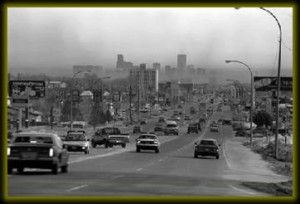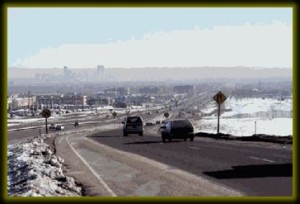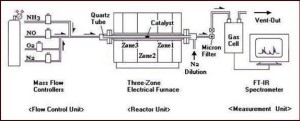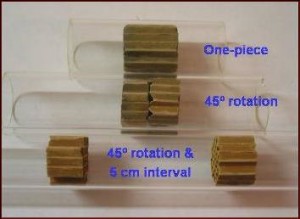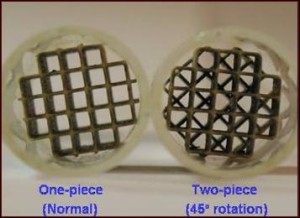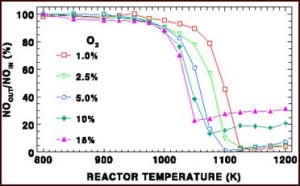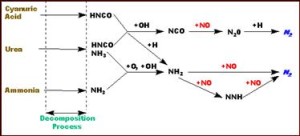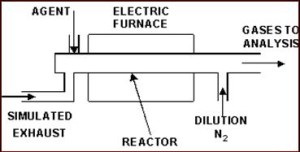What air pollution looks like and why we need to control emissions
Selective Catalytic Removal (SCR) of Nitric Oxides (NOx)
Comprehensive experimentation and numerical modeling have been completed in a series of projects to evaluate of new catalysts for use in SCR applications. The catalysts that have been examined have been monolith structures, and have included: (1) a copper ion-exchanged zeolite (Cu-ZSM-5), (2) a vanadium pentoxide, (3) a vanadium oxide tungsten titanium (V2O5-WO3-TiO2), and (4) a vanadium oxide titanium pillared clay (V2O5/Ti PILC). The effects of various parameters including reaction temperature, oxygen concentration, NH3-to-NO ratio, space velocity, heating area, catalyst arrangement , and vanadium coating on NO removal have been investigated.
Experiment of set up, consists of gas source, flow control, reactor, filtration, and measurement units.
Cross-Section Areas of VWT Catalyst VWT Catalyst Arrangements
Selective Non-Catalytic Removal (SNCR) of Nitric Oxides (NOx)
Comprehensive experimentation and numerical modeling have been completed on the use of SNCR of nitric oxides. Three chemical agents have been examined for use with SNCR: (1) ammonia, (2) urea, and (3) cyanuric acid. For the proper exhaust gas conditions, these agents participate in a series of complex chemical reactions that remove nitric oxides. Up to 95% removal of nitric oxides has been demonstrated for certain conditions.
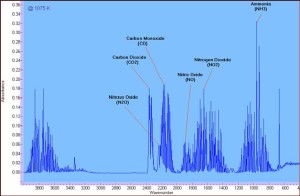
Example of a spectrum from the FTIR spectrometer for an experiment conducted at 1075 K. Each absorbance peak is specific to a particular species. The magnitude of the peak is proportional to the concentration of that species.
Advanced Laser-Based Sensors for Gas Analysis
In collaboration with Professor Robert Lucht (in Mechanical Engineering at Purdue University) and Professor Thomas Walther (in Darmstadt University of Technology, Darmstadt, Germany), advanced laser-based sensors are being developed for the quantification of gaseous species. These sensors are based on the use of all solid state components including diode lasers. The basic principle of these systems is to measure the absorption of energy at specific wave lengths. This absorption can be calibrated to correlate directly with the concentrations of specific species. Systems are being developed to measure nitric oxide (NO), carbon monoxide (CO), and hydrocarbons.
Engine Emissions
Pollutant emissions from internal-combustion engines have been studied in several projects. Particulates from both spark-ignition and diesel engines have been examined. Hydrocarbon oxidation in exhaust ports of spark ignition engines has been investigated. Calculations of nitric oxide production in engines is a part of several research projects. Facilities include a number of engine dynamometers and engines. Gas analysis equipment includes conventional emissions analyzers and a Fourier transform infrared spectrometer.
Copyright © 2001 – 2012 E3 (Engines, Emissions, Energy) Research Laboratory, Texas A&M University Department of Mechanical Engineering, College Station, TX 77843-3123, Phone (979) 845-4705, Fax (979) 845-3081
